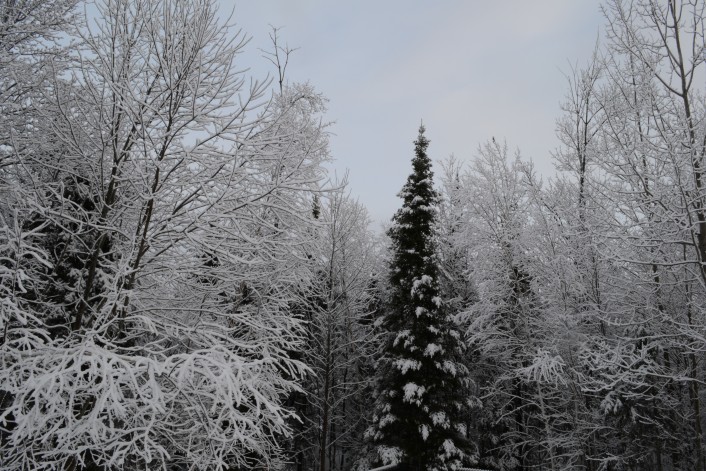So far the late fall weather has been relatively kind with balmy temperatures and little snow. This respite has been a boon to both animals and plants however the natural world is most assuredly geared up for the harshness of another northern winter.
The forests and fields of our region are looking a little spartan these days with the leaves gone from the deciduous trees and only the dark green of the conifer (evergreen) boughs showing.
Fortunately our native trees are perfectly adapted to our northern winters; they slow down their growth and reserve their energies for the coming spring.
Trees have woody stems that support leaves or needles to enable the plant to reach up into the sky for sunlight, the source of their energy. Different kinds of branches on an individual tree grow at different rates depending on the available sunlight. Some branches will grow long and quickly while others grow shorter to fill in the gaps and support leaves.
Summer is the time of growth and food production. Both of these require tremendous amounts of water which are taken up by the tree roots. The leaves provide the energy by way of photosynthesis but they also transpire moisture. So once autumn arrives, deciduous trees drop their leaves and seal over the attached area with a corky layer to prevent further transpiration. Conifer needles are smaller than leaves and benefit by having a waxy coating that conserve water.
Winter is essentially a time of extreme drought
for trees. The ground is typically frozen solid for
months on end and covered in frozen snow.
Winter is a difficult time for our trees; even though there is sunlight, water is difficult if not impossible for tree roots to access. Winter is essentially a time of extreme drought for trees. The ground is typically frozen solid for months on end and covered in frozen snow.
Even though deciduous tree boughs may look like they are dead in winter, a closer inspection will reveal that they are in fact quite alive. Winter buds contain next year’s leaves, miniaturized and safely contained in a tough, scaled covering. What many people may not realize is that each tree and shrub species has its own unique bud and twig arrangement. For example oak twigs have clusters of four or five small buds at the tip.
Trees must also be careful to conserve their energy in the winter so their spring buds and flowers burst forth at the right time. A sudden late winter thaw can fool the tree into opening up their precious buds too early and risk damage by a disasterous heavy frost. Rather than following these false warmer temperatures in the late winter, trees must rely on the changes of available light as true spring arrives.
Why not take the time this time of year to learn how to identify trees by their shape, twig, bud, (or needle) shape and colour.
We are indeed blessed to have a wide variety of species to learn and appreciate for their beauty, even in winter. A visit to one of the many properties protected by the Couchiching Conservancy will show just how magnificent the forest can be, any time of year.
Written by Gayle Carlyle.
Ready to get outside and test your tree identification skills? Visit our Property Map to find a property near you.


